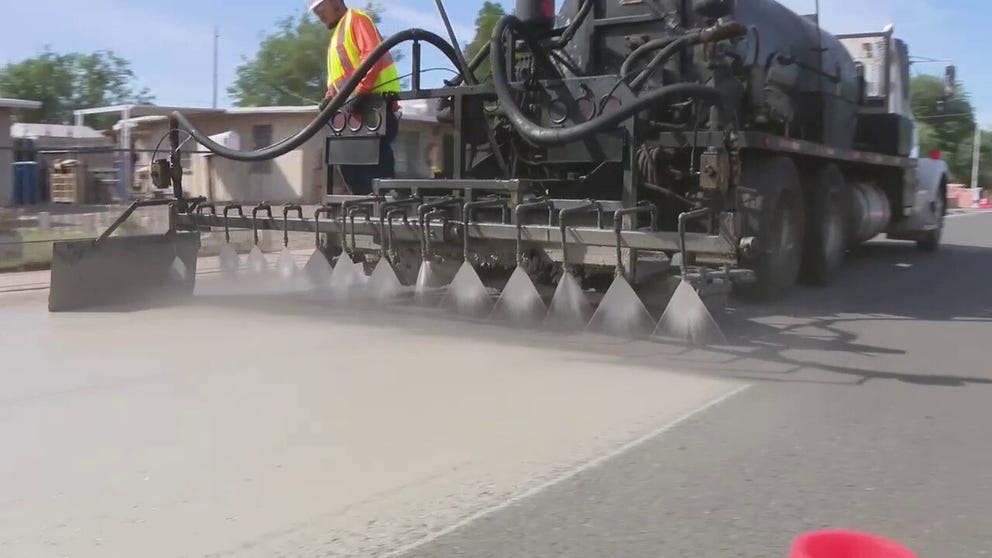'Cool pavement’ technology helps beat heat on Phoenix streets
City leaders selected portions of eight neighborhoods last year to receive cool pavement treatment to help find ways to help mitigate the urban heat island effect
'Cool pavement' technology helps beat heat on Phoenix streets
‘Cool pavement’ technology is giving some much-needed help to the city of Phoenix by reducing heat in urban areas covered in asphalt, a study found.
PHOENIX, Ariz. – ‘Cool pavement’ technology is giving some much-needed help to the city of Phoenix by reducing heat in urban areas covered in asphalt, a study found.
City leaders selected portions of eight neighborhoods last year to receive cool pavement treatment to help find ways to help mitigate the urban heat island effect.
After a year of data, Arizona researchers say that reflective pavement surface temperatures with the new coating were considerably lower than traditional roadway pavement. It was also valuable to cool neighborhood areas that didn’t have much shade from the sun.
Asphalt collects and retains heat during the day and releases it at night. Cool pavement reflects the sunlight that hits it.
According to the Arizona State University study, areas treated with cool pavement saw average temperatures 10.5 to 12 degrees lower at noon and during the afternoon hours. Surface temperatures at sunrise averaged 2.4 degrees lower. Sub-surface temperatures averaged 4.8 degrees lower as well.
"We want to improve the livability of our residents in this city," Rubben Lolly, the city’s special projects administrator, told FOX 10 in Phoenix. "The idea is that it would reduce the amount of heat in the pavement so nighttime temperatures will be reduced."
Phoenix is among several cities experiencing the urban heat island effect due to the retention of heat within the environment.
According to EPA data, the difference in nighttime temperatures in heat island areas can be as much as 22 degrees warmer than temperatures measured outside the heat island. This can lead to more energy consumption, greenhouse gas emissions, and air pollution.
Los Angeles has been using the cool pavement on neighborhood streets and has reported positive results in reducing roadway surface temperatures.
"Too much heat affects people. This is the part we can play to improve that," Lolly said.
The water-based asphalt treatment is applied on top of existing asphalt pavement. It’s made with asphalt, water, soap, mineral fillers, polymers, and recycled materials.
A friction test was conducted. The Arizona Department of Transportation found no safety concerns on streets coated with the cool pavement.
